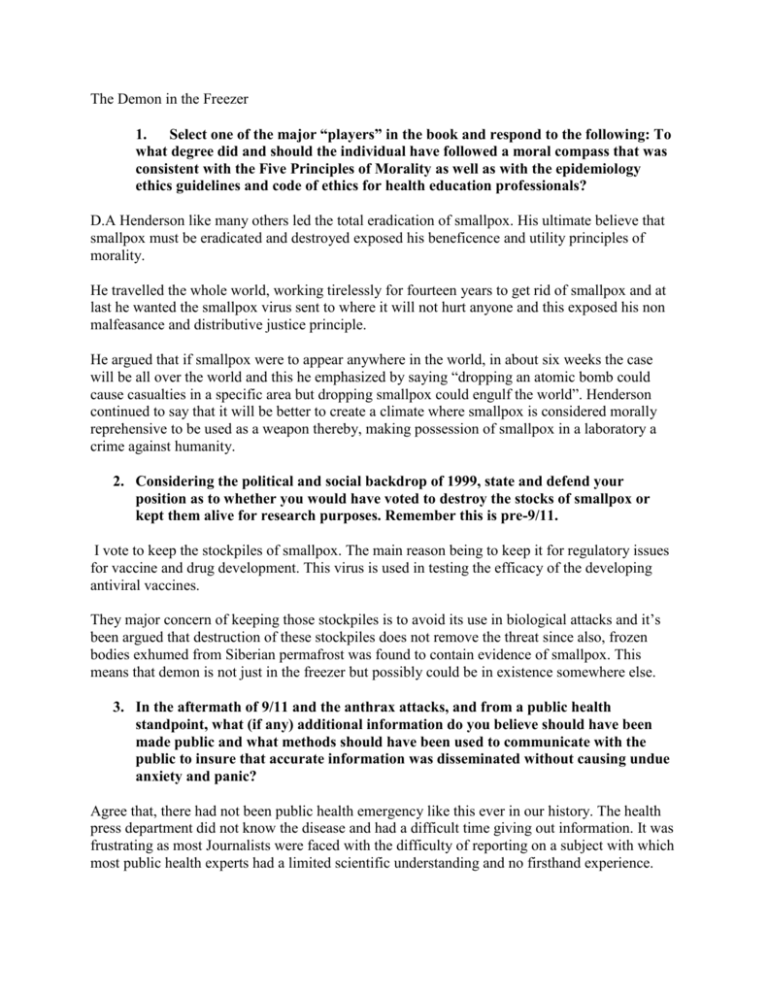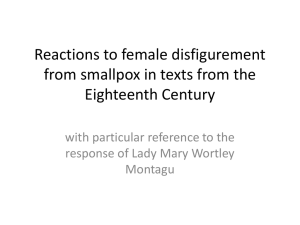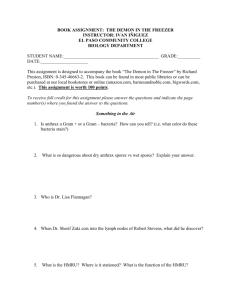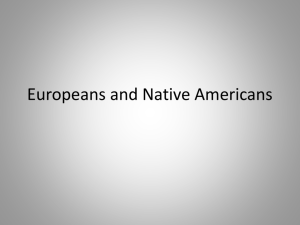The Demon in the Freezer
advertisement

The Demon in the Freezer 1. Select one of the major “players” in the book and respond to the following: To what degree did and should the individual have followed a moral compass that was consistent with the Five Principles of Morality as well as with the epidemiology ethics guidelines and code of ethics for health education professionals? D.A Henderson like many others led the total eradication of smallpox. His ultimate believe that smallpox must be eradicated and destroyed exposed his beneficence and utility principles of morality. He travelled the whole world, working tirelessly for fourteen years to get rid of smallpox and at last he wanted the smallpox virus sent to where it will not hurt anyone and this exposed his non malfeasance and distributive justice principle. He argued that if smallpox were to appear anywhere in the world, in about six weeks the case will be all over the world and this he emphasized by saying “dropping an atomic bomb could cause casualties in a specific area but dropping smallpox could engulf the world”. Henderson continued to say that it will be better to create a climate where smallpox is considered morally reprehensive to be used as a weapon thereby, making possession of smallpox in a laboratory a crime against humanity. 2. Considering the political and social backdrop of 1999, state and defend your position as to whether you would have voted to destroy the stocks of smallpox or kept them alive for research purposes. Remember this is pre-9/11. I vote to keep the stockpiles of smallpox. The main reason being to keep it for regulatory issues for vaccine and drug development. This virus is used in testing the efficacy of the developing antiviral vaccines. They major concern of keeping those stockpiles is to avoid its use in biological attacks and it’s been argued that destruction of these stockpiles does not remove the threat since also, frozen bodies exhumed from Siberian permafrost was found to contain evidence of smallpox. This means that demon is not just in the freezer but possibly could be in existence somewhere else. 3. In the aftermath of 9/11 and the anthrax attacks, and from a public health standpoint, what (if any) additional information do you believe should have been made public and what methods should have been used to communicate with the public to insure that accurate information was disseminated without causing undue anxiety and panic? Agree that, there had not been public health emergency like this ever in our history. The health press department did not know the disease and had a difficult time giving out information. It was frustrating as most Journalists were faced with the difficulty of reporting on a subject with which most public health experts had a limited scientific understanding and no firsthand experience. According to Gerberding the CDC’s traditional “evidence-based” style of communicating to the public should be changed to an “adaptive style” which is more suitable for fast-moving emergencies. “We’ll tell you what we know today, and acknowledge that it may change by tomorrow,” The public health community did a poor job of meeting the media’s demand for information, even though this could have been due to circumstances beyond their control. The ability to provide accurate and comprehensive information was at the mercy of the media since most public health agencies lacked sufficient numbers of technically credible, media-savvy professionals who could work constructively with the media. The irregular and at times confused interactions between the federal government and the press during the crisis resulted in a loss of government credibility and an increasingly aggressive media feeding frenzy. Read more: http://www.upmchealthsecurity.org/website/resources/publications/2003/2003-0615-anthrax2001observations.html. 4) Complete Discussion Guide: MPH 510 the Demon in the Freezer - Discussion Guide.docx. Complete Sections G-H. A. FIVE PRINCIPLES OF MORALITY: [Evidence/examples where these principles were applied and/or moral dilemmas arose] The terribly human look on the face of the deceased man disturbed Sherif during the autopsy process Sheriff would not feel like himself weeks after cutting the deceased man. “it’s not an uplifting process” Wehrle claimed the German vaccine did not work even though he did not say it so as not to offend them but urged them to give everyone in the hospital a second vaccine Jahrling was happy to have put the disease in monkeys that approximates the course of the human disease. Still it bothers him doing it having heard them vocalize, how intelligent they are but the he said “ten monkeys are going to be sacrificed which is not same as the millions of humans with smallpox” Jahrling had thought he wouldn’t be doing such experiments with the monkeys Lisa experienced grief and sadness over Harpers death and regarded her feelings as a necessary consequence of her job. B. ETHICS GUIDELINES FOR EPIDEMIOLOGISTS AND HEALTH EDUCATION PROFESSIONALS [Refer to Part II of the Ethics Guidelines as well as the Code of Ethics for Health Professionals, note examples/evidence of either adherence to this guidelines/code or where the actions were in conflict with them] [Use bulleted format, not all elements of the guidelines and code need to be addressed] The Professional Role of Epidemiologists The successful efforts by local and WHO in vaccination and eradication of smallpox Actions of the department of health and human services at the 9/11attacks The desire of doctors to eradicate smallpox Minimizing Risks and Protecting the Welfare of Research Participants Jahrling tried to warn the CDC team on the exposed anthrax spore Protecting Confidentiality and Privacy The lady whose name has remained withheld. She was opening the mails in the Washington DC. She worked in the office of the senator Tom Obtaining the Informed Consent of Participants Consent was obtained from all the people interviewed. Peter had no interest when the German TV wanted to interview him




